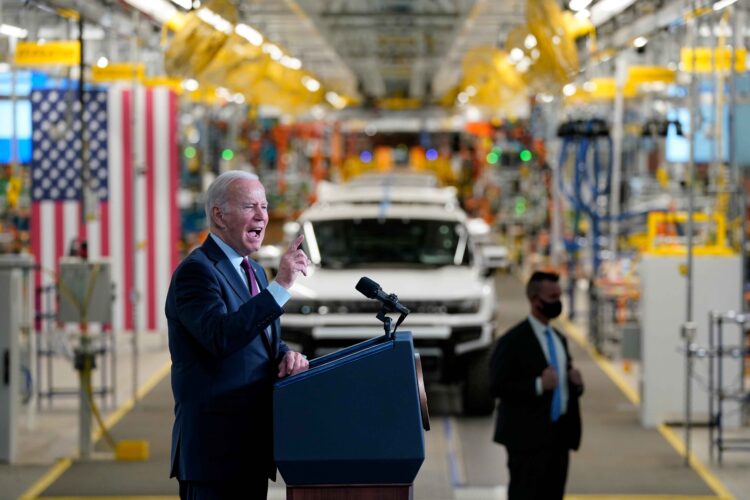The Biden administration introduced new regulations on Wednesday that will force automakers to phase out the majority of new gas powered cars by 2032 and replace them with electric vehicles or hybrids in a move The New York Times is calling “the most significant climate regulation in American history.”
The “tailpipe pollution limits” have been under examination for three years. Developed by President Joe Biden’s Environmental Protection Agency (EPA), they mandate that the majority of new passenger cars, as well as light trucks, sold in the US be all-electric and another significant percentage be hybrid by 2032. The orders are a follow-up to a “zero emissions” promise Biden made in 2021 to combat climate change.
“Three years ago, I set an ambitious target: that half of all new cars and trucks sold in 2030 would be zero-emission,” Biden said in a statement. “Together, we’ve made historic progress. Hundreds of new expanded factories across the country. Hundreds of billions in private investment and thousands of good-paying union jobs. And we’ll meet my goal for 2030 and race forward in the years ahead.”
“It’s the most significant climate regulation in American history,” the Times wrote in its X post and in its email news alert.
Breaking News: The U.S. issued rules to ensure that most new cars sold in the country are electric or hybrids by 2032. It's the most significant climate regulation in American history. https://t.co/rcdGWuM9MZ
— The New York Times (@nytimes) March 20, 2024
Learn the benefits of becoming a Valuetainment Member and subscribe today!
Only 7.6 percent of vehicles sold in the US market in 2023 were electric. This new bundle of regulations would force that figure to become 56 percent, with another 16 percent being hybrids.
Climate change activists claim the largest source of carbon pollution in the United States are cars and other forms of transportation.
On a call with members of the press, a Biden administration spokesperson said these regulations, in addition to state investments in battery and EV manufacturing, will transition the United States away from fossil fuels and help the Biden White House pursue its goal of combatting climate change.
The new regulations will reduce yearly carbon dioxide emissions by several billion tons and bring $100 billion in annual benefits, including $13 billion in “health benefits,” according to the White House.
“That’s going to have immediate benefits in improving air quality, but also improving people’s health,” said Alliance of Nurses for Healthy Environments Director Cara Cook. “So they’re not breathing in dirty air, especially for those who are living near major roadways and highways, heavy traffic [areas]. Those are the ones that are going to really experience a significant amount of benefits from these rules.”
 Shane Devine is a writer covering politics, economics, and culture for Valuetainment. Follow Shane on X (Twitter).
Shane Devine is a writer covering politics, economics, and culture for Valuetainment. Follow Shane on X (Twitter).


















Unless and until the price of electric vehicles goes down, this is an unrealistic
goal. The average person cannot afford a 60K plus vehicle. They also are going to need to address the many problems with electric vehicles and the lack of infrastructure for charging.